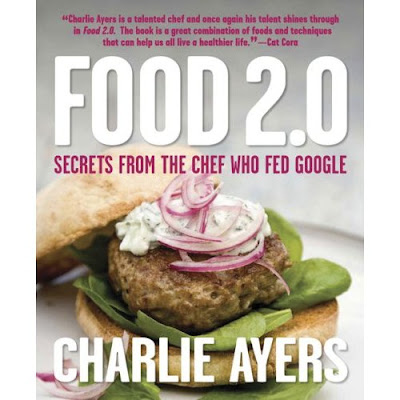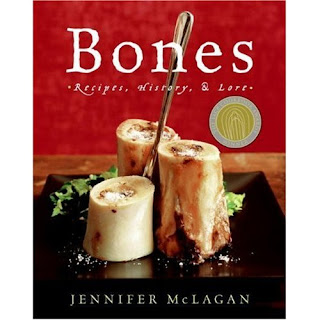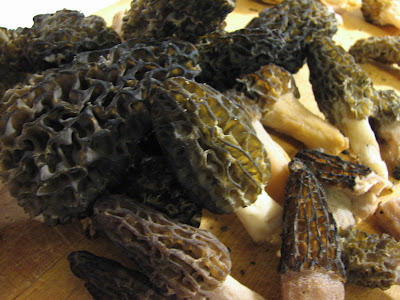
After a very long winter at least here in the very north of the northern hemisphere, spring has finally arrived!
This can only mean one thing: restaurant all over will feature morels, fiddlehead ferns and ramps. These spring delights all come from the wild giving them an elusive aura that is not necessarily warranted, at least if you enjoy walking in the woods. It is my contention that such wild seasonal ingredients give more pleasure to the forager than to the diner even though they are truly delicious in themselves (with the possible exception of fiddleheads, but Fufu argues otherwise).
Take the morel as an example. As you walk leisurely in the woods, you slowly build up an appetite. Then when you find a few morels you develop some pride in your finding. And finally, as your basket fills up, you anticipate and salivate at the thought of the dinner ahead. When you finally arrive at home, you know, from the smell of the wet soil stuck under your sole and from the excitement of family members and friends looking at the brain like mushrooms that no matter how bad you a cook you might be, your morel experience will be remembered as a great success.
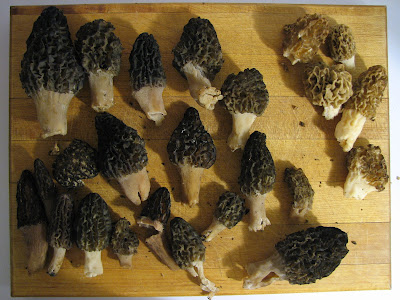
The fact is that a simple walk in the woods can become a wonderful treasure hunt where luck, knowledge, experience and good eyesight all contribute to success in various ways. On bright spring days, the worse that can happen is a short detour to the supermarket to buy button mushrooms or, with a bit of luck, some fresh or dried morels that can compensate for an unfruitful hunt.
To avoid such unfortunate last minute detours, here’s a few hints to help you in your morel hunt this year:
1.) The season
The two type of morels that fructify under Canadian climates are the yellow and black morels or morchella esculenta and morchella elata respectively. When considering the two species, the morel season last at least 4 weeks with the black morels fructifying about a week earlier than the yellow morel. In general, the Victoria day weekend mark the peak of the season but the season truly begin and end with the month of May in southern Ontario and Québec, sometimes extending to early June. Some cynical people suggest that morels pop out of the ground when the mosquitoes season begins others, more romantic, say that the peak of the trillium season is a better indicator.
2.) Where to find them
Around Ottawa, I found a lot of yellow morels under poplar trees and black morels under spruce and fir trees. In other areas, helm trees are said to be a great host. Most morels grow on disturbed terrain where the sun shines once in a while. As such, it is a good idea to stick to trails… it is just more enjoyable to avoid branches and difficult terrain anyway. Take a closer look at places where trees have been cut down and when you find one, look around. Once you spot a morel, chances are that more will be found not too far. And do not forget to take note for the next season since morels tend to grow back in the same area year after year. As a matter of fact, knowing where morels have been growing in the past is the best clue as to where they will grow in the near future.
3.) Take your timeMorels are notorious for how well they camouflage on almost any type of forest groundcover from dead leaves to branches and needles. Once you have spotted a few morels, your ability to find them will develop and you should be able to cover larger areas in less time.
Beware of the false morels
There are a number of other beautiful spring mushrooms resembling the morel which can cause stomach upsets and even death when consumed in large doses. These mushrooms are either verpas or gyromitras and are often abundant during the morel season. Get yourself a good identification guide and you should have no problems safely identifying these mushrooms. One of the best thing to keep in mind is that the morel’s stem is hollow while the gyromitra’s stem tends to be full. Learning to differentiate between gyromitra and morel is easy and fear should not detract you from the pleasures of morel hunting. Here’s a
great page which can help you differentiate gyromitras from morels. Verpas are harder to distinguish from morels but constitute less of a problem in terms of toxicity. Unlike the morel, verpas’ caps are not attached to the stem and are ‘wrinkled’ as opposed to the ‘pitted’ ones of the morels.
Cooking with morels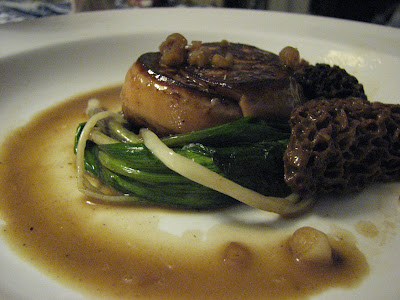
(foie gras with ramps and morels)
What many people do not know is that raw morel is slightly toxic as well. Cooking fortunately destroys the toxin and generally improves the gustative quality of the mushroom. However, unlike other mushrooms such as button mushrooms or chanterelles, morels are quite fragile and will not necessarily benefit from very high heat or prolonged cooking. Cook them like you would garlic: a slight sauté followed by a short stewing if needed, do not burn them.
Morels are mostly appreciated for their aromatic qualities which, in my opinion, resemble truffle. A good cook will therefore insure that such wonderful aroma is preserved by avoiding extended cooking or strong conflicting smells (chocolate coated morel someone?).
More than any other mushrooms, morels like cream and butter and perform splendidly in sauces. Cream sauce and butter sauce are easy successes (see my morel beurre blanc recipe
here). Experienced cooks should also be able to produce very fine reduction sauces as long as they do not go too heavy on strong red wine or other flavoring ingredients.

Morels can also be used for their tremendous beauty on a plate in a spring vegetable ragout or simply as a garnish. Some people even exploit the hollow interior of the morels by stuffing the mushrooms. In fact morels can be quite versatile as long as you keep in mind its essential qualities: the aroma and its delicate nature.

I once made pizza with morels but the results were a disappointment. The delicate flavor of the mushroom did not hold up to the stronger flavor of the otherwise delicious slightly burnt crust and only found a poor support in the crust and cheese. Some people deep fry morels coated in different types of batter, I have to say that I am afraid of such recipes even though they seem extremely popular.
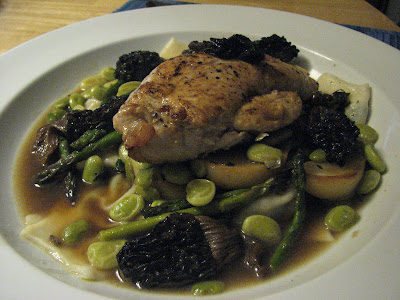
Even deep fried morels and weird morel pizza can be a success however when you pick your own mushrooms since half of the pleasure consist in the hunt itself and that after half a day in the woods, anyone is hungry enough to enjoy even a bland pizza or a deep fried lump of dough and has plenty of story to tell to make the dinner a memorable one.
